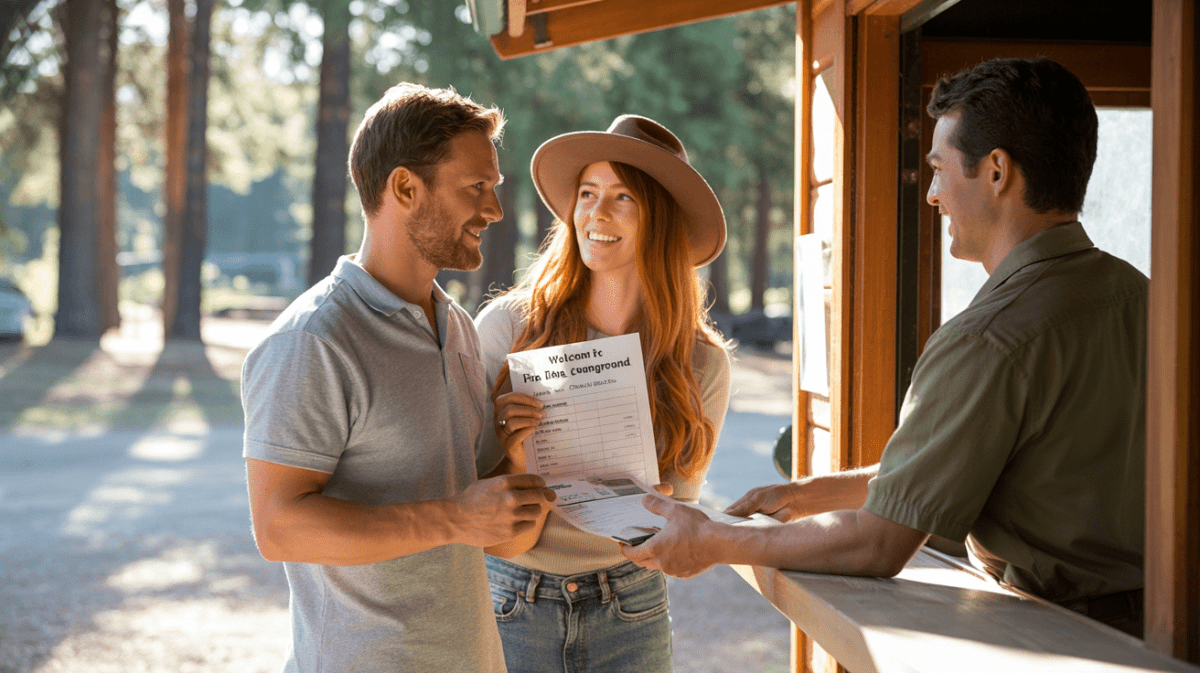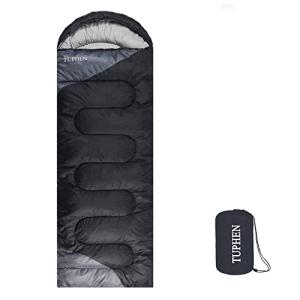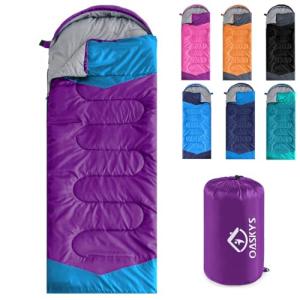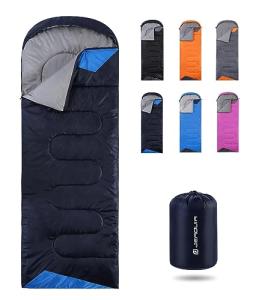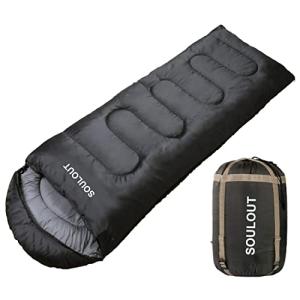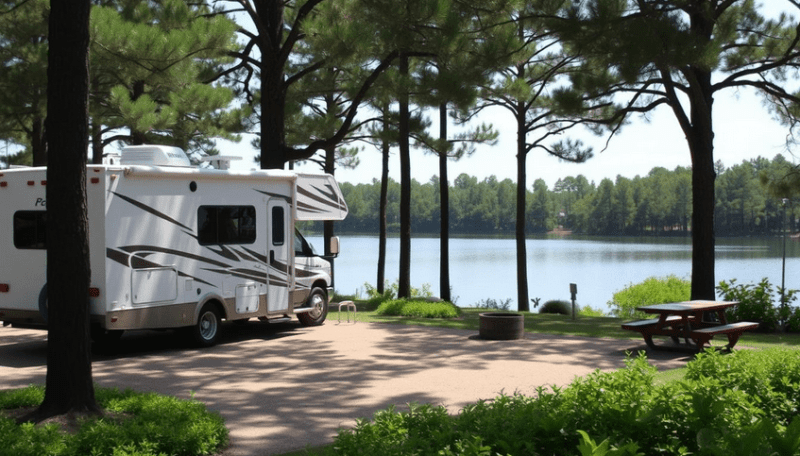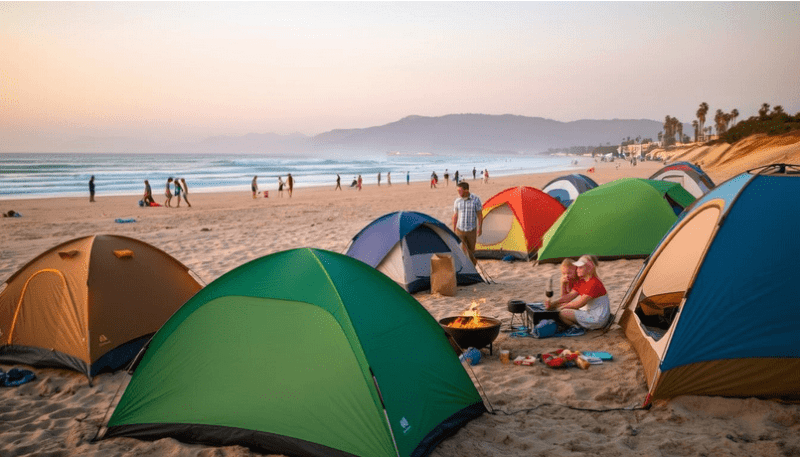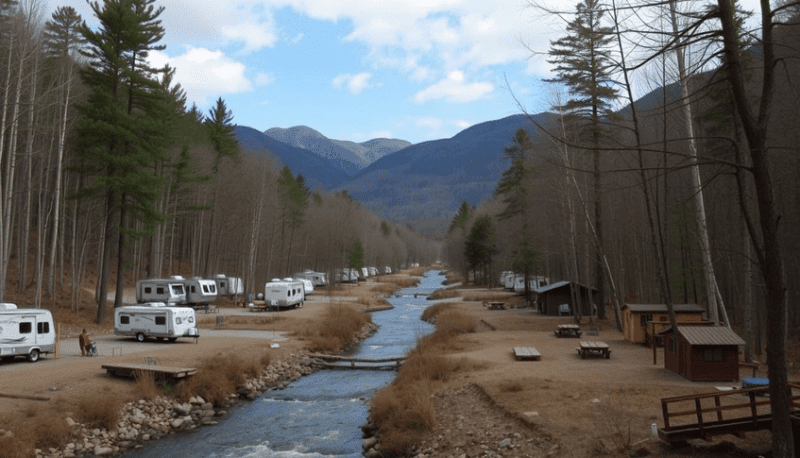Checking into a campground for the first time can be exciting yet a bit overwhelming. She should arrive prepared with necessary documents and information about the campsite. Knowing what to expect at check-in will help make the process smooth and enjoyable.

During check-in, the camper will likely meet friendly staff ready to assist. This is a good time to ask any questions about the campground rules, facilities, and nearby attractions. Understanding the campground's etiquette can enhance her experience and set the right tone for her stay.
It's important to remember that setting up the campsite or RV can take time, so planning accordingly will help. Getting the lay of the land early allows for better exploration of all that nature has to offer.
Key Takeaways
- Be prepared with documents and information for a smooth check-in.
- Campground staff can provide valuable information about rules and attractions.
- Setting up early allows for more time to enjoy the camping experience.
Preparing for Your Check-In
Before arriving at the campground, it is important to handle reservations and pack the right gear. These steps will help make the check-in process smooth and enjoyable.
Reserving Your Spot
Making advanced reservations is a crucial step for a successful camping trip. Many popular campgrounds fill up quickly, especially during peak seasons. Reserving a spot ahead of time ensures that there will be a place waiting upon arrival.
It's advisable to confirm the type of site chosen, whether it’s tent camping or RV travel. Some campgrounds offer amenities like water and electric hookups. Knowing the site details can help in packing the necessary equipment.
If reserving an RV site, consider checking for specific requirements. Many campgrounds require items like a surge protector, pressure regulator, or stabilizers for optimal setup.
Essential Items to Bring
Packing the right items is essential for a successful check-in. Here’s a list of important items to consider:
- Identification: Bring a government-issued ID and confirmation of the reservation.
- Camping Gear: This includes tents, sleeping bags, and cooking equipment.
- RV Equipment: For RVers, it’s critical to have a surge protector and pressure regulator. These protect the RV’s electrical and water systems.
- Stabilizers: If staying in a larger vehicle, using stabilizers can prevent swaying and enhance comfort.
Having these items ready helps campers settle in quickly. It also allows for a more enjoyable experience at the campground.
Understanding Campground Etiquette

Campground etiquette is important for everyone’s enjoyment. By following some basic rules, campers can ensure a better experience for all. Key aspects include observing quiet hours and respecting boundaries.
Observing Quiet Hours
Quiet hours are designated times when noise should be kept to a minimum. Most campgrounds set quiet hours between 10 PM and 7 AM. This is to help everyone get rest during the night.
During these hours, campers should minimize loud conversations, music, and other noise. If using generators, ensure they operate quietly and turn them off when possible.
To enjoy a good camping experience, it is helpful to respect others’ need for peace. If someone asks for quiet, comply kindly. Staying aware of noise levels makes campgrounds pleasant for everyone.
Respecting Campsite Boundaries
Campsite boundaries are often marked by signs or rope. Respecting these lines is crucial for personal space and privacy. Each camper deserves a little area where they can relax and enjoy.
When setting up a tent or placing equipment, remain within the designated area. Avoid walking through another camper’s site, as it can disrupt their experience.
Additionally, it is respectful not to borrow or use items from other sites without permission. Maintaining these boundaries helps everyone feel comfortable and secure. Keeping the campground tidy along with respecting space can greatly enhance the camping experience.
Setting Up Your RV or Campsite

When setting up an RV or campsite, a few important tasks help ensure a smooth experience. It's key to know how to use slide outs properly and connect to utilities safely.
Proper Use of Slide Outs
Slide outs are extended sections of the RV that offer extra space. Before extending them, make sure the area is clear of obstacles like trees, rocks, or other campers.
Pull the slide out switch slowly and watch for movement. Always check for any obstructions while the slide out is in motion. If anything blocks it, return it to its closed position and clear the area.
After fully extending, check that the seals are tight and that no water can enter. Proper care helps reduce wear and tear, adding to the RV’s lifespan.
Connecting to Utilities with Surge Protector
Connecting to utilities is essential for a comfortable stay. First, locate the power pedestal at the campsite. It's important to use a surge protector to guard against power spikes.
Plug the surge protector into the power source before connecting to the RV. This step is crucial for safety. It prevents damage caused by unexpected voltage changes.
Next, connect the RV's power cord to the surge protector. Secure all connections, ensuring they fit tightly. Be mindful of any water sources, as keeping electrical connections dry is vital.
For water hookups, use a fresh water hose and connect it to the campsite’s supply. Always check for leaks after connections are made.
Exploring Nearby Attractions

When staying at a campground, visitors often find numerous attractions nearby. Each location offers unique experiences.
Yellowstone National Park is a top choice for those in Wyoming. It features geysers, hot springs, and diverse wildlife. Hiking trails allow guests to explore the landscape.
In Arizona, the Grand Canyon is a must-see. Its vastness and stunning views attract many tourists. Visitors can hike along the rim or take guided tours.
Florida is known for its beautiful beaches and theme parks. Campers can visit places like Everglades National Park for a different adventure. Wildlife lovers appreciate the chance to see alligators and various birds.
Ohio offers several parks and historical sites. Cuyahoga Valley National Park is perfect for hiking and enjoying nature. Families can explore the Ohio State Reformatory, known for its movie history.
Here’s a quick list of attractions:
- Yellowstone National Park
- Grand Canyon, Arizona
- Everglades National Park, Florida
- Cuyahoga Valley National Park, Ohio
As campers explore, they can find activities tailored to their interests. Whether seeking adventure or relaxation, nearby attractions enrich the camping experience.
Frequently Asked Questions

Campground check-ins can vary, but there are common elements to expect. This section addresses some common questions about the check-in process, required documents, and what to do upon arrival.
How does the check-in process work at most campgrounds?
At many campgrounds, visitors first go to the check-in desk or kiosk. There, staff confirm reservations or assign spots. Guests may receive a map and information about the campground’s rules and facilities.
What are the typical check-in times for campgrounds?
Most campgrounds allow check-in between 1 PM and 3 PM. Some may have different times based on location or type. It's best to confirm the check-in hours before arriving.
Which documents are usually required for campground check-in?
Visitors typically need a reservation confirmation and an ID. Some campgrounds may require proof of payment or a membership card. It's good to have these documents ready for a smooth check-in.
What are the first steps to take upon arriving at a campground?
Upon arrival, guests should locate the check-in area. They should have their documents ready and be prepared to ask questions if needed. Taking note of campground rules and maps is also important.
What amenities can I expect at a powered campsite?
A powered campsite usually includes electricity, a picnic table, and a fire pit. Some may have water access or restrooms nearby. Amenities can vary, so checking the campground details is helpful.
How do you find and secure a spot at a first-come, first-served campground?
For first-come, first-served campgrounds, arriving early increases the chances of getting a good spot. It helps to research campground layouts and popular areas. Being flexible with campsite size or amenities can also help in securing a spot.
DISCLAIMER
This document is provided for general information purposes only. It should not be relied upon as providing legal advice, technical, or specific operational guidance to the reader, whether as to the practices described in the document or the applicable legal requirements and regulations. Best Camping Deals.com expressly disclaims any responsibility for liability arising from or related to the use or misuse of any information in this document.
